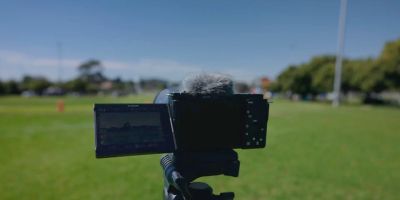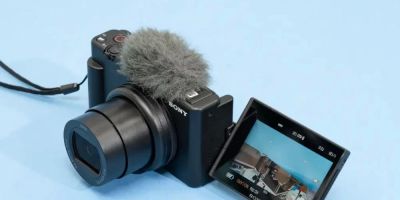How to Photograph Wildlife Ethically: A Guide for Responsible Photographers
Wildlife photography is one of the most rewarding forms of art, allowing us to capture the beauty and grace of animals in their natural habitats. However, as wildlife photographers, it is our responsibility to ensure that our work does not negatively impact the creatures or environments we are capturing. In this article, I'll share essential tips for photographing wildlife ethically, ensuring that your images tell a story without harming the subjects or their surroundings.
1. Understanding the Importance of Ethical Wildlife Photography
Before grabbing your camera and heading out into the field, it’s essential to understand what ethical wildlife photography means. Ethical practices prioritize the well-being of animals and their habitats. It’s not just about getting a great shot; it’s about respecting the creatures you photograph and minimizing your impact on their environment. This includes avoiding stress or disturbance to animals, not encouraging unsafe behaviors, and maintaining a safe distance.
Ethical wildlife photography promotes conservation efforts by educating the public and raising awareness about the need to protect vulnerable species and ecosystems. It’s a form of storytelling that highlights the beauty of wildlife, while reminding viewers of our responsibility to care for the planet.
2. The Importance of Maintaining a Safe Distance
One of the cornerstones of ethical wildlife photography is keeping a respectful distance from the animals. Getting too close can stress animals and disrupt their natural behavior, which is not only harmful to them but could also be dangerous for you. Many animals, especially larger predators or species that are already threatened or endangered, can react aggressively if they feel threatened.
To get a great shot while maintaining that safe distance, consider using a telephoto lens. This allows you to capture detailed and intimate images from afar, minimizing your impact on the animal's behavior. The key is patience: wait for the right moment when the animal is naturally going about its business, rather than forcing the situation by getting too close.
3. Understanding Animal Behavior
Understanding the behavior of the species you’re photographing is critical for ethical wildlife photography. When you can read the body language and actions of an animal, you can anticipate how it will respond to your presence. If an animal shows signs of stress—such as fleeing, displaying defensive postures, or vocalizing in distress—it's time to back off and allow it to return to its natural state. Pushing an animal to perform for the camera can have lasting negative effects on its well-being.
Always strive to photograph wildlife during their normal routines, whether they are feeding, grooming, or resting. If you disturb these behaviors, you risk making the experience traumatic for the animal and potentially altering its natural patterns.
4. Avoiding Disturbance to Habitats
Wildlife photography should never come at the cost of damaging the environment. Invasive activities like trampling on vegetation or disturbing fragile ecosystems can have long-lasting consequences for the wildlife that relies on these habitats for survival. Always stick to established trails and paths to minimize your footprint on delicate terrain.
If you’re photographing in a national park or wildlife reserve, make sure you’re following the rules and guidelines set by the local authorities. These guidelines are there to protect both you and the wildlife. Consider supporting conservation efforts and ecotourism initiatives that prioritize sustainability in wildlife photography.
5. The Role of Lighting and Timing
Natural light is your best friend when it comes to ethical wildlife photography. Harsh artificial lighting can disturb animals, especially nocturnal species or those with sensitive eyes. It can also damage the environment by altering the habitat's natural balance. Use natural light whenever possible and be mindful of the time of day when you’re shooting.
Golden hour—either just after sunrise or before sunset—offers the best lighting for wildlife photography. During these times, animals are often more active, and the soft lighting provides beautiful tones and shadows in your images. Avoid using flash photography unless absolutely necessary, as it can startle animals and cause unnecessary stress.
6. Be Prepared and Do Your Research
Before heading out on a wildlife photography expedition, doing your homework can make a big difference in ensuring an ethical experience. Research the species you intend to photograph, their natural habitat, behaviors, and any seasonal patterns that affect their activity. Understanding these factors will allow you to choose the best times and locations for capturing animals without disturbing them.
Additionally, come prepared with the right gear for the job. This means having a camera with high resolution and a long focal length lens so you can photograph wildlife without getting too close. Having a tripod or monopod will also help you stabilize your shots while minimizing movement, which can disturb animals.
7. Respecting Local Communities and Regulations
In many parts of the world, indigenous communities and local populations live in close proximity to wildlife. It’s important to recognize that these communities have their own traditions and ways of interacting with the environment. When photographing wildlife in these areas, respect the cultural practices and involve local guides who understand the land and the species you’re encountering.
Ensure you are adhering to any legal restrictions or guidelines regarding wildlife photography. Laws regarding animal welfare and conservation vary from place to place, and understanding these rules is vital for maintaining ethical practices. This includes acquiring necessary permits when required and avoiding any illegal activities like baiting or feeding animals to get the perfect shot.
8. Conclusion: Ethical Wildlife Photography is for Everyone
Ethical wildlife photography isn't just for professionals; anyone with a passion for nature and a camera can practice these principles. As photographers, we have the power to influence how others see the natural world. By capturing moments that highlight the beauty and fragility of wildlife, we can educate others and promote conservation efforts. By practicing respect and responsibility in our approach, we can ensure that wildlife continues to thrive for generations to come.
By following these tips for ethical wildlife photography, you can ensure that your passion for photography is both fulfilling and respectful. And if you're looking for the perfect gear to help with your next wildlife photography adventure, make sure to visit our site, Scent Snob, for recommendations on the best products and services tailored to your needs!





